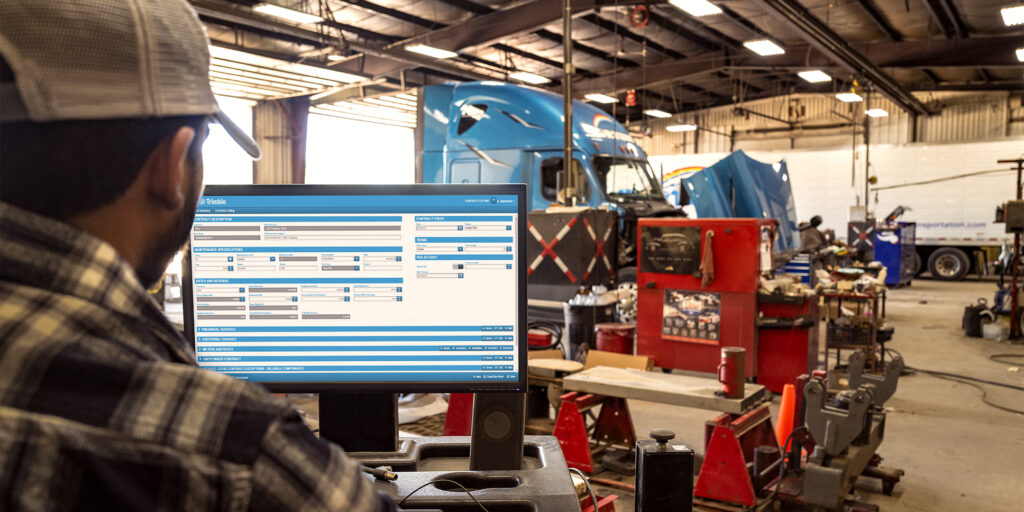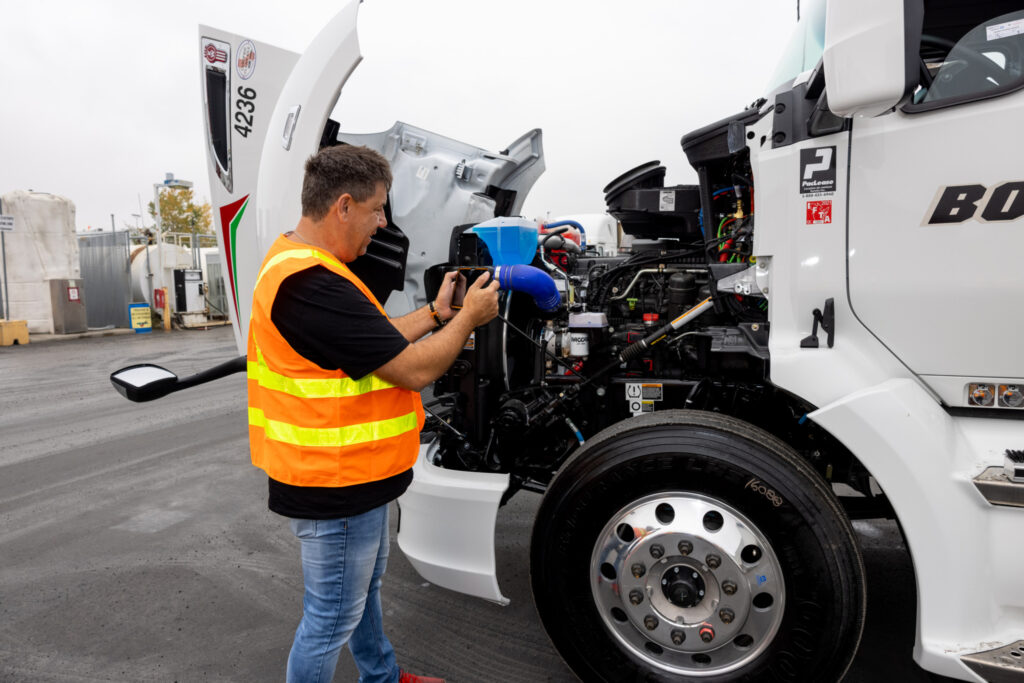Unlocking the full potential of telematics for fleet maintenance
Many in the trucking industry automatically associate telematics with GPS tracking, Hours of Service compliance, and little more. However, as fleets begin to explore what else telematics systems can do, they are increasingly realizing these devices harness many maintenance benefits.
It’s just a matter of unlocking their full potential.
“Telematics will allow you to get codes from the engine ECM, to follow the truck in real time and to address those smaller issues before they turn into a major breakdown,” explains Melanie Simard, director of compliance, client service and technical support with Isaac Instruments.
She cites, for example, the use of “smart” driver vehicle inspection reports (or eDVIRs). Drivers can use a telematics tablet while doing their pre-trip inspection, which reminds them of all the required inspection points. If a defect is found, the driver can immediately send a photo to the maintenance department and get advice on how to proceed.
“The fleet manager [or maintenance manager] receives it the minute the driver finishes their DVIR and can address it right away,” says Simard. “The fleet manager receives the alert and will know if it’s a major [defect] that needs to be addressed right away, or if it’s OK to stop at the next truck stop or when the truck gets back to the terminal to get it repaired.”
Photos of the defect give the fleet or maintenance manager more insight into the proper course of action, and takes any guesswork out of the driver’s hands. It also creates a paper trail, adds Dave Walters, solutions engineer and product expert with Trimble.

“The shop now has a copy of every vehicle inspection report. If a defect is noted, the shop can make the decision,” he says. “All that is done electronically rather than waiting for a piece of paper that may or may not ever make it to the shop.”
Brian Sillett, safety and compliance manager with Ayr, Ont.-based heavy-hauler Equipment Express, said the ability to quickly share photos of potential defects is hugely important to his 34-truck fleet. It has more than 200 trailers, and most sit for lengthy periods. When the fleet moves an over-dimensional load, it often has several trucks assigned to the task, and they all need to be ready to roll.
“It’s not all the time our specialized mechanics are on site,” he says. The photos can be used to expedite repairs when these mechanics arrive, or even guide other personnel to complete easy fixes.
It’s not the only way telematics can support maintenance schedules. After a wheel is installed, for example, related data can identify exactly when retorquing will be required, making it possible to schedule the work in a fleet shop rather than somewhere en route.
“It definitely saves drivers downtime on the road,” Simard says. “If you’ve taken care of it at your own terminal you can save so much money.”
Integrating with shop software
The fleets that best use telematics to improve maintenance operations integrate the telematics device itself with a transportation management system (TMS) and shop software platform.
Walters says the TMS brings dispatch into the loop, so when a truck has a critical defect at the side of the road, they can immediately make plans to cover the load. And the fleet maintenance manager is alerted to the problem so they can plan a repair.
“The three components work together,” Walters said of the telematics device, TMS and shop software platform. “The ability to exchange data today is mission critical.”
When it comes to integrating the telematics device and shop software, in Trimble’s case TMT Fleet Maintenance, Walters says there are four data sets that should be shared. These include: engine fault codes; meter information (miles/hours); GPS location; and eDVIR details.
- Engine fault codes: The on-board telematics device is connected to the ECM and can identify fault codes. Those are actionable when passed onto the fleet’s shop software platform. “Once inside our system, the maintenance folks can consume it. And when the driver pulls over and says ‘I have a problem with my truck,’ they’ll know exactly what the fault is so they make an intelligent decision,” Walters explains.
- Meter information: Mileage or hours of use, when fed into the shop software, allows the maintenance manager to plan preventive maintenance activities. It also can help maintenance operations ensure they’re taking advantage of all available warranties.
“They can slip through the cracks,” Walters says of warrantee claims. “Most fleets catch the big items – the engines and transmissions. But the huge dollars today are in the aftermarket parts. An LED lightbulb is guaranteed for life – you should never be purchasing one twice unless the truck was in an accident.”
Telematics coupled with a maintenance management platform can keep track of the warranty coverage for each item on the truck, something that becomes increasingly complex as a truck begins undergoing repairs and has replacement parts installed.
Calgary-based Gibson Energy predicts it saves about $100,000 a year in warranty claims using the TMT Fleet Maintenance platform.
- GPS location: Asset location tracking helps maintenance managers plan repairs. They can also deploy geofencing and receive alerts when a truck needing service or subject to a recall campaign enters a fleet’s yard. Knowing the truck’s location also helps maintenance managers identify the closest service location if the truck needs repairs before returning to the terminal.
- eDVIR: Electronic DVIRs effectively allow technicians or maintenance managers to see a defect firsthand and give drivers better-informed advice on what to do. “If it’s a non-OOS [out-of-service] event and there’s no progressive damage, we create an Alert Pending,” says Walters. This means the truck can be serviced next time it arrives at the terminal. “If it’s a critical event, we facilitate a repair,” he adds. When the repairs are completed, the driver can be alerted via the telematics device.

Getting predictive
Predictive diagnostics is the Holy Grail when it comes to using telematics to reduce downtime. Copious amounts of data help decide when to replace parts – and before they fail.
For instance, if a fleet detects a trend that an alternator in a certain application tends to fail at a certain mileage, it may be beneficial to replace the part at that point, rather than risk a more costly roadside breakdown.
“I think it will start in bits and pieces,” Simard predicts of true predictive diagnostics. “You can’t predict everything. You need good models and you need to start somewhere.”
Artificial intelligence (AI) will have a big role to play in enabling predictive diagnostics, she says, and Isaac has already begun establishing an AI team for this purpose. “We are putting a lot of effort into helping fleets predict those events,” Simard says of breakdowns.
But Walters cautions the industry as a whole isn’t yet ready for predictive diagnostics.
“Everybody wants to go there,” he says. “We have begun that process. Obviously, we collect a lot of data on assets and now we’re beginning to analyze that data in new ways to look at the average life of this alternator inside this fleet. If we get good data, we can begin to make predictions of when we might want to look to replace this particular component.”
The problem is that dealers won’t replace something that’s operating properly, he adds. “There’s some growing up the industry needs to do. If we can all get comfortable with predictive data elements and can agree that given these conditions, we should facilitate a repair and not get into a breakdown situation, everybody wins. The industry needs to come to grips with that.”
Have your say
This is a moderated forum. Comments will no longer be published unless they are accompanied by a first and last name and a verifiable email address. (Today's Trucking will not publish or share the email address.) Profane language and content deemed to be libelous, racist, or threatening in nature will not be published under any circumstances.